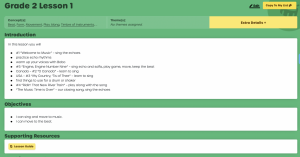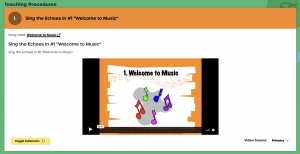Easy Lesson Planning with Denise Gagne
.png)
How Easy is Easy?
When planning your lessons, you need to start with the end in mind:
What do you want your second grade, for example, to be able to do at the end of the year?
What skills?
What concepts?
How will you achieve this?
Skills
- sing in tune
- keep a steady beat when tapping, moving or playing instruments
- listen, respond and connect to a wide variety of music
Concepts
- pitch - I want second grade to be able to recognize high/low, up/down, and to read simple melodic patterns including mi-so, mi-so-la, do-re-mi
- rhythm - I want second grade to read ta, ti-ti, rest, half note/rest, whole note/rest
How will I achieve this?
- sing, play, move, listen, read, write and create or as the Core Arts Standards say, Create, Perform, Respond, Connect
What We Learn Posters
The What We Learn posters for all grades are on MusicplayOnline in Lesson Planning - Overview -What We Learn
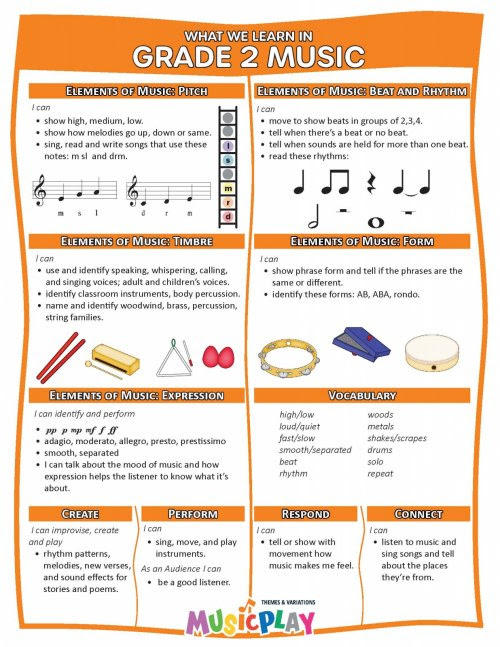
Scope and Sequence
The Scope and Sequence K-6 is also found on on MusicplayOnline in Lesson Planning - Overview.
This gives the overview for the whole elementary program. Your district or state scope and sequence may differ in small ways, but this scope and sequence aligns closely to the sequence Lois Choksy outlined in "The Kodaly Method" and to the sequence outlined by Arvida Steen in "Exploring Orff."

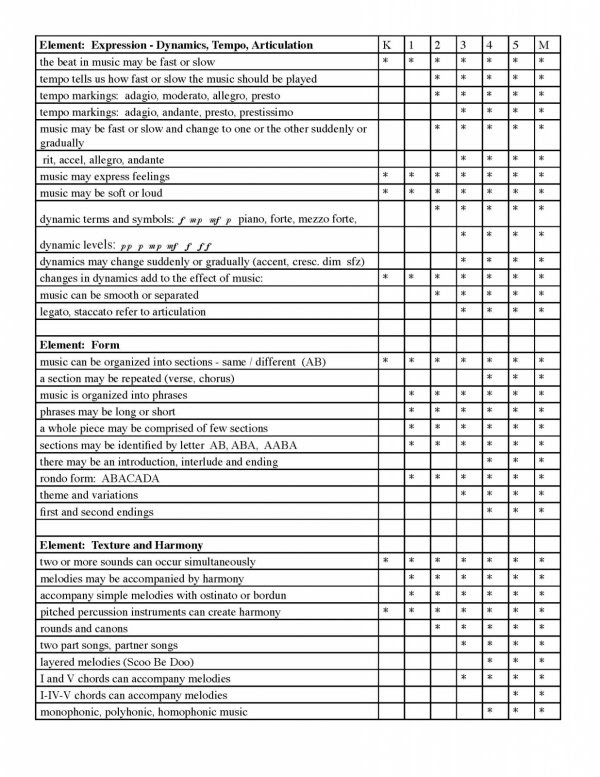
But how do we go from Scope and Sequence to lesson plans?
Next step - Outline your year.
Year Plan - Grade 2
What can you hope to accomplish - and when?
For example, September will include Hill Hill (so-mi), Engine #9 (so-mi, review ta, ti-ti) and Bounce High. (so-mi-la). Lessons will include activities to sing, play, move, listen, read, write, and create.
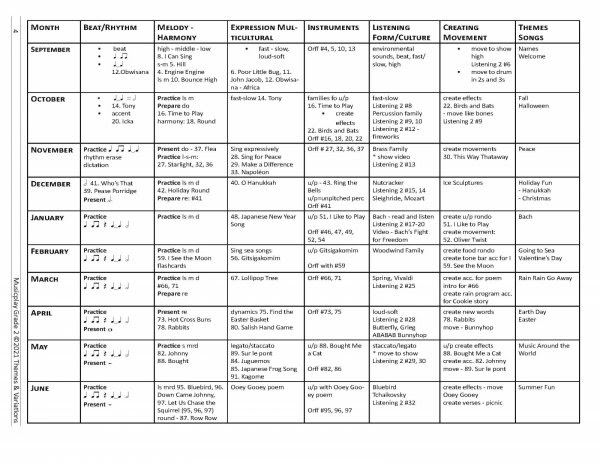
Every Music Teacher has a different schedule.
Many music teachers in Canada have two 30 min. music classes. (some have 1 or 3)
Many music teachers in the USA have one 45 min music class. (or 50 or 60)
In creating lesson modules on MusicplayOnline, I'm trying to offer enough options for 30-90 minutes of instruction per week. Music Teachers are creative and resourceful and will create extensions when they have more time. Or they'll do more storybook lessons, teach additional instruments, or play the very fun music games on MPO.
Month Outlines
How do I know what's in the modules? The month outlines found on MusicplayOnline in Lesson Planning - Overview. These are something you should download, and maybe print and keep in a binder.
Column 1 - Song List
- What's in the song list? These are all the songs planned for this week in Musicplay. When Denise built the modules, she didn't always include all of them!
Column 2 - Lesson Module
- What's in the module? The actual songs and activities included in the Lesson Module are in the middle column.
Column 3 - Additional Options
There are really great units, instrument methods, solfa practice, rhythm practice and interactive games. New games that kids love include Note Toss, Space Music Adventure, Coconut Chaos and Trivia wheel.
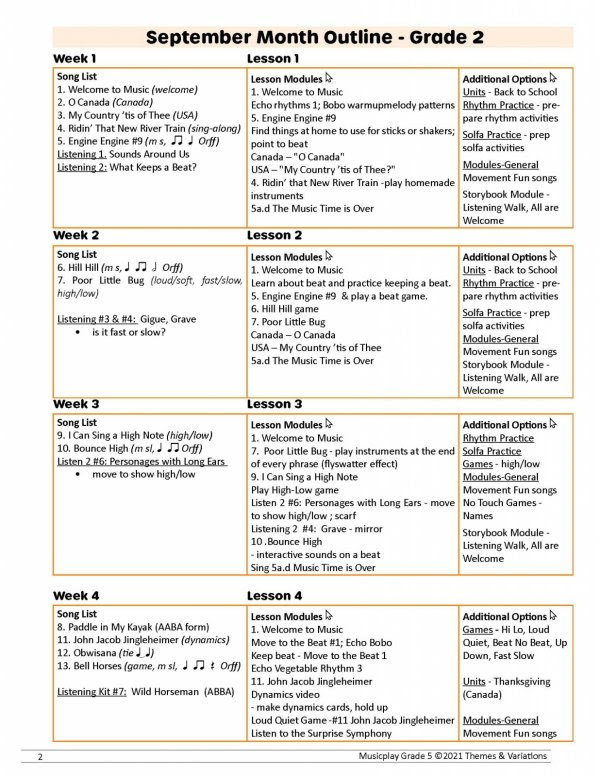
Lesson Modules
Customizable complete lesson plans for each grade for each week of the school year are on Musicplayonline. This is the key to EASY lesson planning! Follow the module, substituting if you have an activity you prefer. If you have Orff instruments, extend Engine #9 by teaching the Orff arrangement, and have the students create B sections.
This is a framework - and it gives you a really good starting point. And then you customize to meet the needs of your students, using whatever instruments and materials in your classroom.
Every song in the program has options that aren't included in the module: Piano/Guitar/Ukulele accompaniments, Orff arrangements, Beat and Rhythm Interactives, Beat and Rhythm Printables, Tone Ladders, Solfa/Note Challenge and Printables - and more!
Every teacher has different strengths - if you have Orff training, you might jump from the module right to the Orff arrangement and do wonderful extensions. If you have Kodaly training, you might jump to the solfa activities and have kids creating their own melodies with the melody composition tool.
But this framework will give you a great start, and now with MyLists, you can copy it and customize it. You can link to YouTube, other sites, or to something that's in your Google Drive.
This is EASY lesson planning!
1. Each Lesson Module starts with an outline and I Can Statements
2. Activities are presented in order. I usually start with a welcome song. You can customize the lessons. Copy it to a MyList, then delete any songs/activities you don't want to use, then substitute your own!
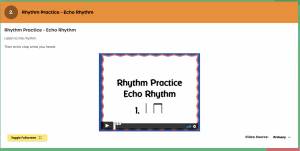
3. I like to do some kind of rhythm reading, (or echo early in the year) activity. Experienced teachers may have alternate rhythm activities they prefer to use.
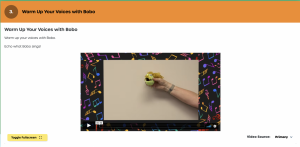
4. Bobo is a fun vocal warmup. Kids have gotten attached to Bobo. BUT - Experienced teachers may have alternate vocal warmups they prefer to use.
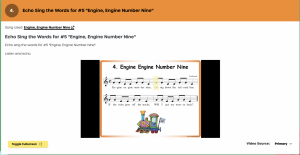
5. The song Engine Engine is taught by rote.
Experienced teachers will probably just sing this to the
Experienced teachers will probably just sing this to the
students instead of using the video.
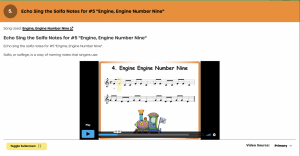
6. The song Engine Engine is sung in solfa. If you teach solfa, you will probably do this yourself. (no video)
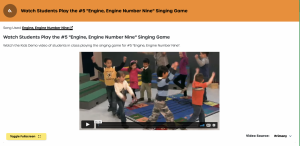
7. Kids demo videos show how the game is played.
This is a useful tool for all teachers.
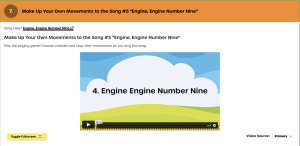
8. A recording of the song (new) follows -
most teachers won't use the recording. They'll just sing the song as they play.
most teachers won't use the recording. They'll just sing the song as they play.
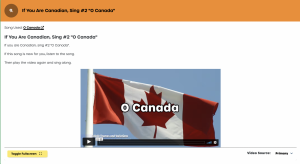
9. If you teach in Canada, teach/review O Canada.
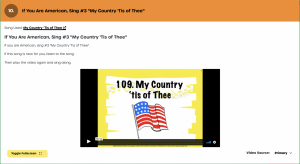
10. If you're American, teach/review My Country
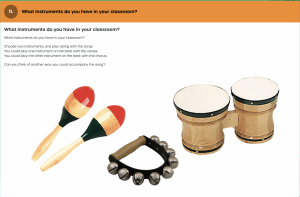
11. Choose classroom instruments to play along with Ridin' That New River Train
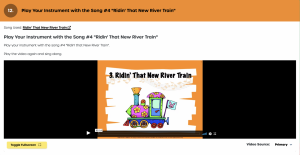
12. Play instruments with the song. If you have enough time,
or in another lesson, teach the words and sing along!
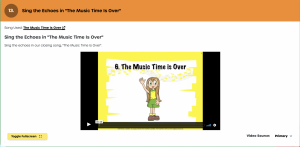
13. This echo song has been my goodbye song forever.
If you have one you like better, use your own!

